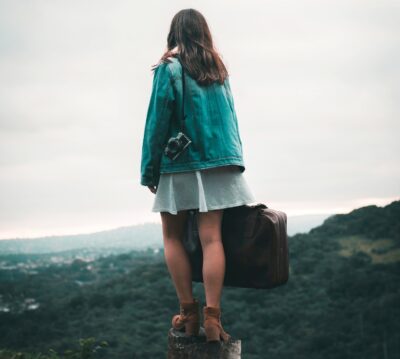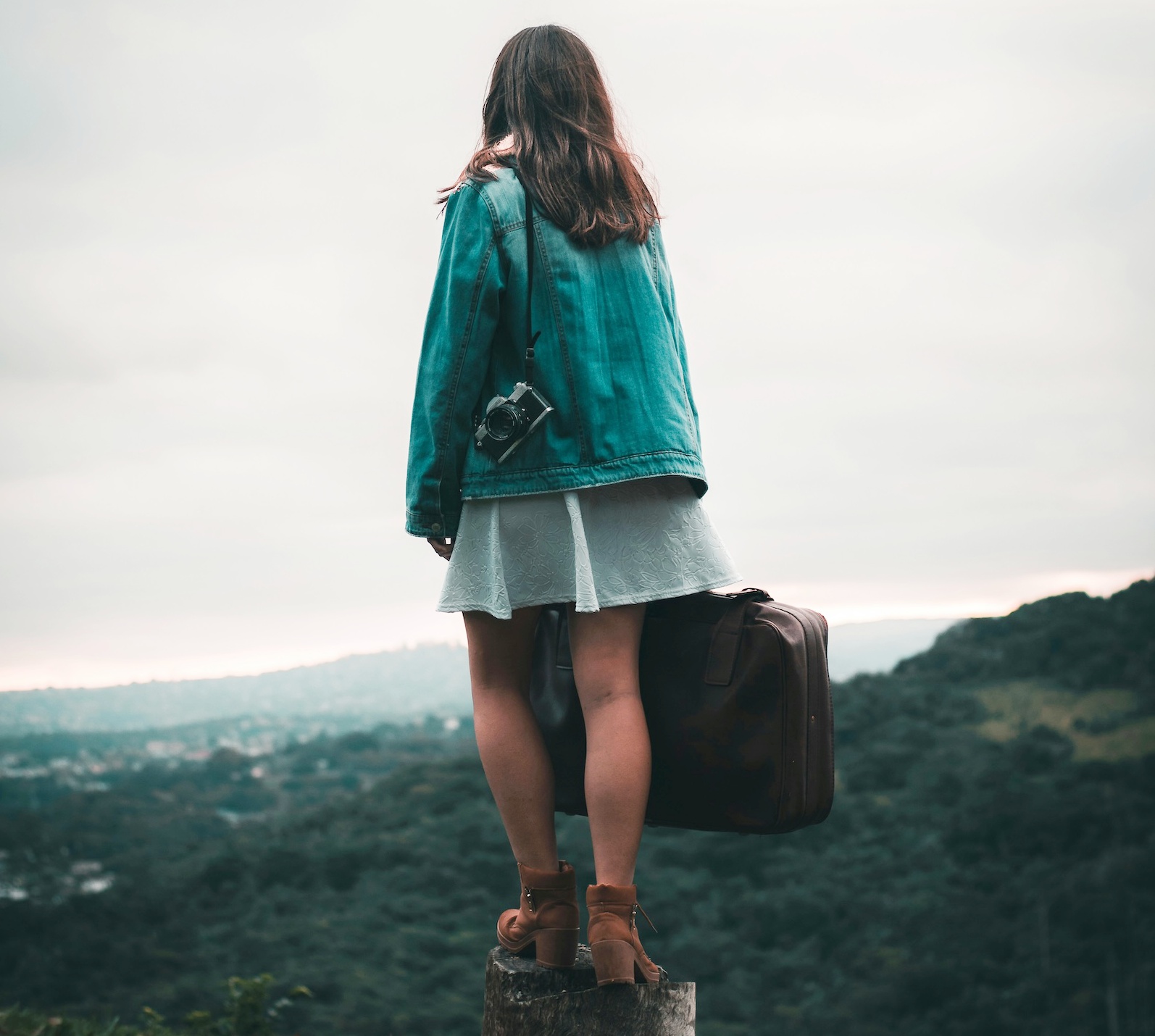
There’s a particular kind of silence that descends when you sit alone at a restaurant table meant for two. It settles between the empty chair across from you and the curious glances from neighboring diners. The feeling speaks volumes about societal expectations and our own internal dialogues. And despite years of solo adventures across continents and countless solo meals, it still makes me squirm a little bit. Even as I tuck into my food and read my novel, trying to avoid the eyes of other diners – I realise that learning to eat alone as a solo female traveler might be a simple act but one that still requires a small act of courage every single time.
The Paradox of Solo Travel
I’ve navigated the winding alleys of Marrakech’s medina, hiked remote trails in New Zealand, wandered aimlessly in Sarajevo’s historic center, and negotiated transportation in countries where I couldn’t speak a word of the local language. Yet somehow, walking into a restaurant and requesting “table for one” remains one of solo travel’s most intimidating challenges. There’s something profoundly vulnerable about sitting alone with your thoughts and a meal in a public space designed for social connection.
This paradox follows many solo female travelers. We are bold enough to journey alone across the world, yet sometimes struggle with the quiet intimacy of our own company over dinner. While we confidently navigate foreign metro systems and check into accommodations without hesitation, the prospect of dining solo can often send a flutter of anxiety through even the most seasoned traveler.
From Avoidance to Acceptance
During my early solo travel experiences, I crafted elaborate strategies to avoid eating alone in public. I’d grab takeaway to eat hurriedly in my hotel room, schedule late lunches to miss the crowds, or subsist on snacks gathered from local markets. My introverted nature both contributed to this avoidance and provided the perfect excuse—wasn’t I simply honoring my preference for solitude?
But gradually, I recognised that I was missing the rich cultural experience that happens around food. The rhythms of a city’s dining scene, an opportunity to observe local customs and interactions, and the simple pleasure of lingering over a well-prepared meal without rushing back to my guesthouse.
The turning point came bit by bit. It wasn’t quite a conscious decision on my part, but the more I ventured to dine solo during my trips, whether in the cosmopolitan bustling of London or the quaint charm of Sintra – the more comfortable I became and the less self-conscious I felt. Soon, I found myself savoring each bite with a presence I rarely experienced when dining with companions, enjoying the opportunity to fully take in the experience and my surroundings.
The Art of Solo Dining
Years later, I’ve developed what I call my “solo dining philosophy,” a collection of practical wisdom and mindset shifts that have transformed eating alone from an anxiety-inducing necessity into one of travel’s unexpected pleasures:
- Preparation dissolves anxiety. Before traveling to a new destination, I research restaurants known to be solo-diner friendly. Counter seating, communal tables, or establishments popular with locals often provide more comfortable environments than formal, couple-oriented venues.
- Timing shifts the experience. Lunch often feels less intimidating than dinner for solo dining beginners. Similarly, arriving just as restaurants open often means more attentive service and less self-consciousness about occupying a table alone.
- Intentional accessories create purpose. A book, journal, or small sketch pad provides both company and activity. I’ve found that having something to do with my hands and attention helps bridge uncomfortable moments while waiting for food to arrive.
- Embrace the observer’s advantage. Solo diners have the unique privilege of complete observation. Without the distraction of conversation, we notice the subtle interactions between staff, the rhythms of the kitchen, the unspoken customs of local dining. This heightened awareness becomes a form of participation rather than isolation.
The most surprising discovery of my solo dining journey has been how rarely I remain truly “alone” during these meals. Connections tend to arise precisely because I am alone—approachable, present, and fully engaged with the experience rather than with a companion. They emerge organically from the vulnerability of solitude rather than despite it.
The Gift of Your Own Company
This summer I’m planning a two-week rail journey through Norway, and I already feel the familiar flutter of dining anxiety returning. Nordic cultures, with their reputation for reserve and formality, present new territory for my solo dining practice. But I remind myself that each new destination offers an opportunity to deepen this skill—to further embrace the gift of my own company.
I’ve researched restaurants that seem to be friendly to solo diners and cozy cafés near my accommodations, where I can start with the lower-stakes experience of coffee and pastries before building up to a full meal. And I’ll be packing my Kindle and a trusty journal, ready to record observations and impressions that might otherwise fade in the absence of a companion to remind me.
Learning to eat alone around the world has become more than a practical skill—it’s evolved into a metaphor for the entire solo travel experience. It encapsulates the journey from discomfort to confidence, from self-consciousness to self-reliance. It teaches us that the company we keep with ourselves can be as rich and rewarding as any conversation with others.
When we master the art of dining alone, we discover that solitude is not the absence of connection but rather a different kind of presence—one that allows us to connect more deeply with our surroundings, with local culture, and ultimately with ourselves.
As women increasingly embrace solo travel, perhaps we might reframe the narrative around eating alone. Rather than viewing it as a necessary challenge to overcome, we might recognise it as one of solo travel’s most profound gifts: the opportunity to savor not just the meal before us, but our own company as well.

Camila Castro
Camila Castro is a seeker, global citizen, mindful traveler, storyteller, and certified Travel Coach. As a Mindful Travel Coach, she guides multi-passionate seekers in harnessing the power of Mindful Travel to create more purposeful, meaningful, and impactful experiences in their travels so they can enhance their lives.
Email: bejourneyful@gmail.com

How empowering and inspiring! Thank you for sharing.
Thank you so much for reading 🙂